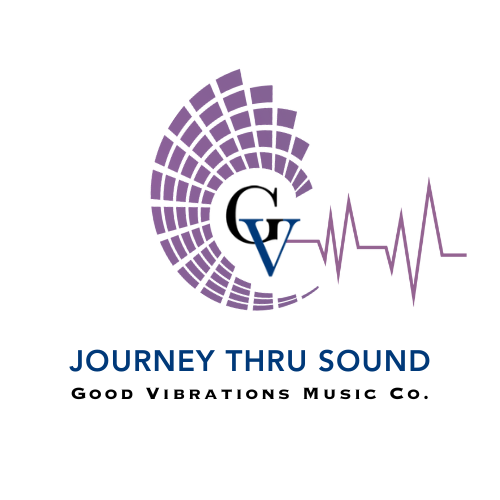Nikola Tesla once remarked, "If you want to find the secrets of the universe, think in terms of energy, frequency, and vibration." At Good Vibrations Music Company, we've embraced this wisdom and dedicated the past decade to establishing a new health paradigm centered around vibrational medicine. Today, we aim to share some fundamental terminology, insights into sound therapy's background, and how this therapeutic practice can be a valuable tool in supporting our health and healing.
Learning about sound therapy is akin to mastering a new language, introducing terms such as frequency, hertz, and vibro-acoustics. For those new to this domain, let's briefly delve into these concepts. Frequency, simply put, is the sound itself—a result of objects vibrating, such as guitar strings or tuning forks. Visualizing frequency in wavelengths helps us understand the length (low) or shortness (high) of a sound. Frequency, measured in Hertz (Hz), describes the number of waves passing a fixed point in a given time, crucial in decoding the impact of different sounds on our well-being.
Assigning numerical values to sound waves allows us to measure them in Hertz. From the frequency of food to brain states and natural sounds, this scale helps us understand the vibrational landscape. For instance, the brain's deep sleep (delta waves) resonates at 0.5-4Hz, while daily human conversation hovers around 200-400Hz. This understanding sets the stage for exploring sound therapy's therapeutic potential, known as vibro-acoustic therapy, where sound vibrations support and restore depleted energy by enhancing cellular movement.
Delving into the historical roots of sound therapy unveils its ancient origins. From the earliest languages, where the Egyptian hieroglyph for music symbolized well-being, to the teachings of Pythagoras, the "Father of Mathematics" and "Father of Music," sound has been recognized as a tool for both mathematical understanding and healing. The 1920s introduced the groundbreaking work of Dr. Royal Raymond Rife, who correlated diseases with specific frequencies and pioneered the use of frequency generators to target and destroy diseased cells.
Fast forward to modern times, where experiments using frequencies with cancer patients, led by Director of Music Technology Anthony Holland, showcase the potential of sound in shattering microorganisms and influencing cellular changes. These experiments have demonstrated success in altering the shape and size of cancer cells and combating infections resistant to antibiotics. From shamanic drums to diagnostic tools like Ultrasound and MRI machines, sound therapy is a versatile healing tool. it is also employed in treating brain and behavioral disorders, such as PTSD, showcasing the evolution of this age-old practice.
The therapeutic potential of sound extends far beyond its physical effects, weaving into the intricate tapestry of emotional well-being. Sound therapy serves as a conduit for the expression and release of human emotions, offering a unique avenue for unlocking and unraveling blocked feelings. Chronic stress, a pervasive contributor to various physical ailments, finds a formidable opponent in the soothing waves of therapeutic sounds. By delving into the vibrational realm, sound therapy has demonstrated its capacity to alleviate the burdens of stress, fostering a sense of calm and balance.
Don Campbell and Alex Doman, in their insightful book, Healing at the Speed of Sound, shed light on the immune-boosting properties of upbeat music. The harmonious interplay of melodies and rhythms not only resonates with our auditory senses but also extends its influence to the immune system. The uplifting tunes have been observed to enhance the production of immunoglobulin IgA, a crucial element in the body's defense against diseases. This immune-boosting aspect of sound therapy underscores its potential to contribute to overall health by fortifying the body's natural defense mechanisms.
The vibrational nature of sound therapy has also shown promise in the realm of pain relief. Migraines, notorious for their debilitating impact, and chronic sinus infections, which often resist conventional treatments, have found a potential ally in sound vibration. As sound waves permeate the body, they interact with the physiological processes, providing relief from pain and discomfort associated with these conditions. This dual role of sound therapy—addressing both emotional and physical aspects—presents a holistic approach to well-being, acknowledging the interconnectedness of mind and body.
Sound therapy emerges as a multifaceted tool for health, offering benefits that extend well beyond its auditory realm. By recognizing and leveraging the profound impact of sound on our emotional landscape and immune system, we can integrate sound therapy into our lives as a proactive measure for managing stress and promoting overall wellness. This non-invasive and therapeutic method has the potential to unlock the body's natural ability to support healing. As we continue to explore the nuanced interplay between sound and human health, the therapeutic symphony of vibrations holds the promise of unlocking new dimensions in the pursuit of holistic well-being.
RESOURCES
Healing at the Speed of Sound: How what we hear transforms our brains and our lives. 2011. Don Campbell and Alex Doman.
The Book of Sound Therapy: Heal Yourself with Music and Voice. 1993. Olivea Dewhurst-Maddock.
http://www.royal-rife-machine.com
http://www.royal-rife-machine.com/Royal-Rife.htm
https://www.orlandosentinel.com/news/os-ap-ptsd-audio-therapy-20150829-story.html
https://www.drlindenfeldresettherapy.com/single-post/2017/04/15/The-Healing-Sound
https://sites.duke.edu/soundscapes/2015/12/04/the-effectiveness-of-vibroacoustic-sound-therapy-in-medicine/

